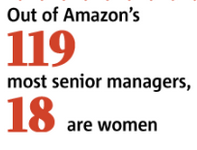I recently had the privilege of speaking on a panel at the IWish conference in Dublin on females in STEM sectors. The initiative was established in 2014 by three Cork businesswomen — Gillian Keating, a Partner with Ronan Daly Jermyn Solicitors; Caroline O’Driscoll a Partner at KPMG and Ruth Buckley, Head of ICT and business services at Cork City Council. IWish is a chance for secondary school girls to listen, meet and greet female role models in STEM and motivate them to consider choosing science, tech, maths or engineering as part of their subject choices as they move to third level education.
Women represent the single largest economic force in the world. They are half of the world’s population, earn more college degrees than men; yet they do not professionally engage in high-end math-intensive fields such as computer science and engineering. Meeting women who are in these industries highlights to young girls that it is possible and allows them to see what a career in these industries might look like as well as how to get there. In science, on average women have 9% of leadership roles globally. Providing female role models that girls can identify with helps to break down the stereotypes that exist in today’s society and will hopefully in time begin to bring these dismal numbers up.

Around 120,000 people are working in the STEM sector in Ireland and only about a quarter are women. There are many reasons why we see less females choosing these male dominated subjects at third level, including the perception that they won’t ‘fit in’ or that the courses and industries they choose are ‘boys only’ clubs. Research carried out by SFI shows that the main reason students choose a third-level course is because they feel it ‘fits’ their perception of themselves.
My panel’s topic was ‘Females in STEM, a life no less ordinary’. I was joined on the panel by Katie Brennan, Accenture; Grainne McAleese, Alexion and Ciara Judge, Student Entrepreneur. We touched on many important topics such as how we got into the roles we are currently in, what career advice we would give to females considering STEM sectors and what our journey has been like so far. I talked about female entrepreneurship and my rather unconventional route into VC. In many ways I related to the topics being discussed because the VC industry and indeed the entrepreneurial industry is heavily male dominated and this is something I’ve experienced first-hand in the last number of years. However, working for Atlantic Bridge where a third of the investment team are women, has allowed me access to important role models and has helped me to identify what the career path in VC is like for a female.
The one piece of advice from my own personal experience that I would give young girls who are thinking of starting their own company or going down the VC route or indeed going into any STEM profession, it would be this: Instead of adopting the perception that being a female in STEM is a huge hindrance or a barrier, think of it as a massive opportunity. The lack of women in STEM means we are lacking the perspectives of half the world’s population. Females should see an opportunity to put their own stamp on industries that are ripe for disruption and bring unique ideas and fresh individuality. Feeling out of place or the ‘odd one out’ may seem daunting at first, but it forces you outside your comfort zone and in my experience, this can only lead to good things. It pushes your boundaries and brings out the best and most ambitious side of yourself. It allows you to make mistakes early and learn from them as you progress in your career. It makes you less risk averse and opens up a world of opportunities that you don’t even realise exist. Being the only female sitting at the table can sometimes be daunting at times but it makes you more resilient and more determined to succeed, it makes you tough and fuels your ambition, forcing you to speak your mind which in turn only improves your confidence.
There are very few industries nowadays that have not yet been disrupted in some way by science or technology. It is such an exciting time to be building a career in one of these sectors, learning something new every day as well as adapting and evolving to the changes that impact every part of our life. Females need to begin to understand that they too can be the disruptors and that the opportunity for them to do this is only just beginning.









